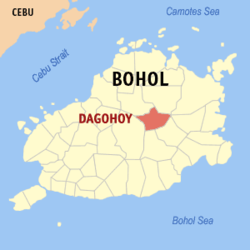
Alicia, officially the Municipality of Alicia, is a 4th class municipality in the province of Bohol, Philippines. According to the 2020 census, it has a population of 24,374 people.

Bilar, officially the Municipality of Bilar, is a 4th class municipality in the province of Bohol, Philippines. According to the 2020 census, it has a population of 18,512 people.
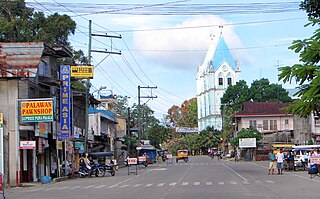
Calape, officially the Municipality of Calape, is a 3rd class municipality in the province of Bohol, Philippines. According to the 2020 census, it has a population of 33,079 people.
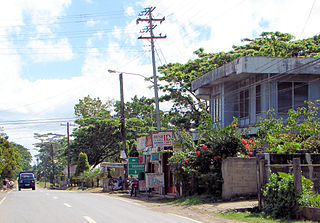
Carmen, officially the Municipality of Carmen, is a 1st class municipality in the province of Bohol, Philippines. According to the 2020 census, it has a population of 49,191 people.

Catigbian, officially the Municipality of Catigbian, is a 4th class municipality in the province of Bohol, Philippines. According to the 2020 census, it has a population of 23,805 people.
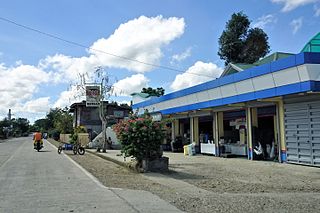
Danao, officially the Municipality of Danao, is a 4th class municipality in the province of Bohol, Philippines. According to the 2020 census, it has a population of 20,245 people.
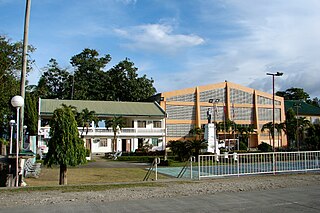
Duero, officially the Municipality of Duero, is a 4th class municipality in the province of Bohol, Philippines. According to the 2020 census, it has a population of 18,861 people.

Garcia Hernandez, officially the Municipality of Garcia Hernandez, is a 4th class municipality in the province of Bohol, Philippines. According to the 2020 census, it has a population of 24,430 people.

Inabanga, officially the Municipality of Inabanga, is a 3rd class municipality in the province of Bohol, Philippines. According to the 2020 census, it has a population of 48,534 people.

Jagna, officially the Municipality of Jagna, is a 3rd class municipality in the province of Bohol, Philippines. According to the 2020 census, it has a population of 35,832 people.

Lila, officially the Municipality of Lila, is a 5th class municipality in the province of Bohol, Philippines. According to the 2020 census, it has a population of 12,240 people.

Loay, officially the Municipality of Loay, is a 5th class municipality in the province of Bohol, Philippines. According to the 2020 census, it has a population of 17,855 people.

Mabini, officially the Municipality of Mabini, is a 4th class municipality in the province of Bohol, Philippines. According to the 2020 census, it has a population of 28,701 people.

Pilar, officially the Municipality of Pilar, is a 4th class municipality in the province of Bohol, Philippines. According to the 2020 census, it has a population of 28,693 people.

San Isidro, officially the Municipality of San Isidro, is a 5th class municipality in the province of Bohol, Philippines. According to the 2020 census, it has a population of 9,909 people.

San Miguel, officially the Municipality of San Miguel, is a 4th class municipality in the province of Bohol, Philippines. According to the 2020 census, it has a population of 25,356 people.

Sevilla, officially the Municipality of Sevilla, is a 5th class municipality in the province of Bohol, Philippines. According to the 2020 census, it has a population of 11,376 people.

Sierra Bullones, officially the Municipality of Sierra Bullones, is a third class municipality in the province of Bohol, Philippines. According to the 2020 census, it has a population of 26,095 people.

Sikatuna, officially the Municipality of Sikatuna, is a 5th class municipality in the province of Bohol, Philippines. According to the 2020 census, it has a population of 6,906 people.

Trinidad, officially the Municipality of Trinidad, is a 3rd class municipality in the province of Bohol, Philippines. According to the 2020 census, it has a population of 35,119 people.

